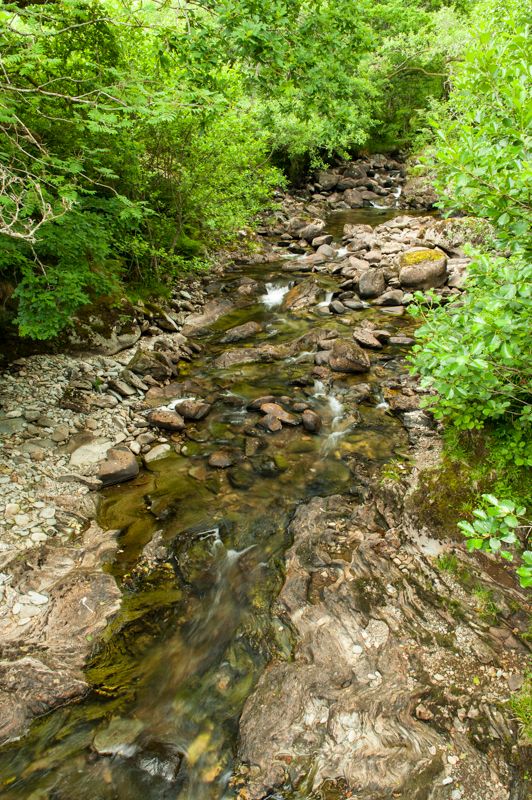Riparian woodland is simply woodland along rivers and water courses. It serves very important functions in our landscapes, in regulating natural processes and in mitigating extreme events like flooding. Native woodland in the riparian zone is a vital part of the water ecosystem. It helps regulate the temperature of the water by providing shade and the tree roots (such as the deep roots of the water-loving alder) help prevent banks from eroding. Cold water is critical for species like Atlantic salmon which face a number of threats and dappled shade from riparian woods over the water prevents water temperatures rising too much.
Native trees have a beneficial impact on the biological health of the river. Rotting deadwood provides good habitat for invertebrates that ultimately provide food for fish and other aquatic life. Large branches and whole trees that fall into the water provide shelter for animals and help change the water flow, creating a variety of habitats on the river bed. The tree leaves which fall into the water, especially from small trees like willow, provide a food source for aquatic life and contribute to nutrient input in upland streams, where nutrients are often in short supply. Some of our most iconic species rely on healthy riparian and aquatic habitats, including otter, osprey, white-tailed eagles and Atlantic salmon. Alder is a key riparian tree. It has special bacteria on its root nodules, which enable the tree to fix atmospheric nitrogen into the soil; in this way it contributes to improving soil fertility.
Action Needed
- Ensure the Scottish Government takes decisive action to reduce impacts from high deer numbers.
- Ensure the government grant schemes, such as the Forestry Grant Schemes, incentivise widespread uptake of well-planned riparian woodland creation.
- Champion the use of riparian habitat as a key arterial network part of a wider ‘Nature Network’ across Scotland. Supporting the nationwide ‘Riverwoods’ https://scottishwildlifetrust.org.uk/our-work/our-projects/riverwoods/ project is a key way to help deliver this.
Threats
- Riparian zones have suffered greatly due to imprudent heather burning, clearance for agriculture, pollution, and large-scale conifer afforestation.
- Commercial non-native forestry planted right up to the water’s edge in the past results in deep shade and acidification that upsets the delicate chemistry of the water.
- Deer impacts prevent the wider uptake of riparian projects because in the current context of deer management, fencing is needed to protect the trees. The cost of this fencing can be prohibitive for riparian strips, or clusters of trees planted in the riparian zone, and it is often impossible to fence areas suitable to trees because these areas are prone to flooding, washing away fences across and beside rivers and streams.
MSP Nature Champion

Rachael Hamilton
Member for: Ettrick, Roxburgh and Berwickshire
Region: South of Scotland
Party: Scottish Conservative & Unionist Party



